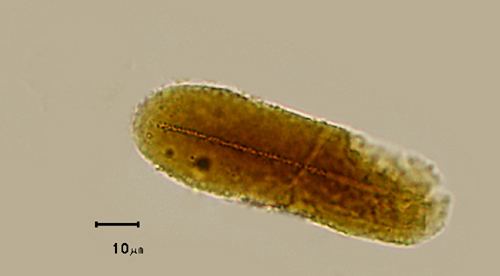 | ||
Representative species Nitrospirae, Acidithiobacillus ferrooxidans, Acidithiobacillus thiooxidans, Acidithiobacillus caldus, Acidithiobacillus albertensis | ||
Iron-oxidizing bacteria are chemotrophic bacteria that derive the energy they need to live and multiply by oxidizing dissolved ferrous iron. They are known to grow and proliferate in waters containing iron concentrations as low as 0.1 mg/l of. However, at least 0.3 ppm of dissolved oxygen is needed to carry out oxidation.
Contents
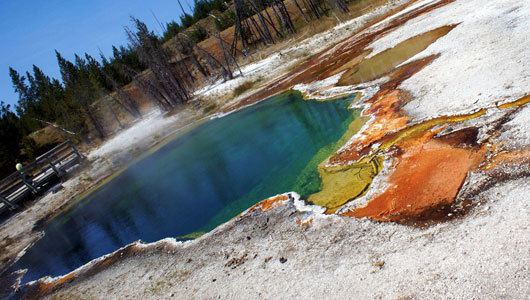
Known species of bacteria with microbial metabolisms based on iron oxidation include Thiobacillus ferrooxidans and Leptospirillum ferrooxidans.
Habitat
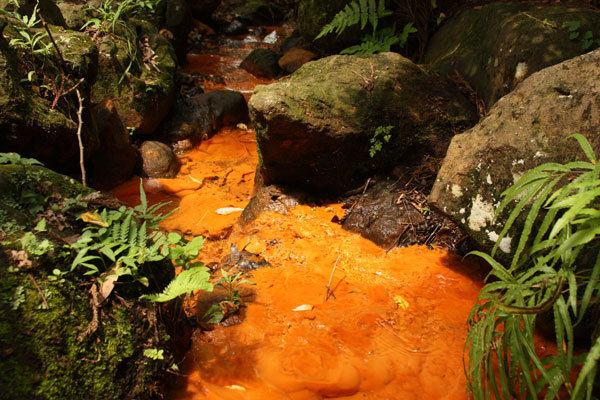
Iron-oxidizing bacteria colonize the transition zone where de-oxygenated water from an anaerobic environment flows into an aerobic environment. Groundwater containing dissolved organic material may be de-oxygenated by microorganisms feeding on that dissolved organic material. Where concentrations of organic material exceed the concentration of dissolved oxygen required for complete oxidation, microbial populations that contain iron-reducing bacteria can reduce insoluble ferric oxide in aquifer soils to soluble ferrous hydroxide and use the oxygen released by that change to oxidize some of the remaining organic material:
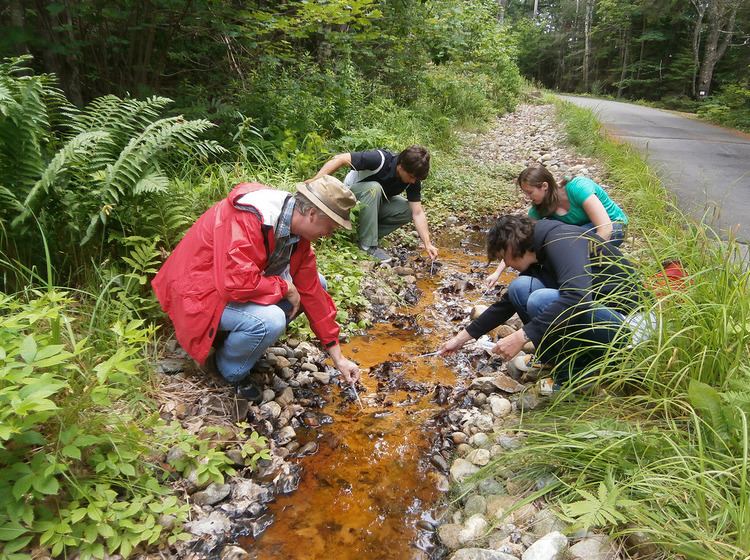
When the de-oxygenated water reaches a source of oxygen, iron-oxidizing bacteria use that oxygen to convert the soluble ferrous iron back into an insoluble reddish precipitate of ferric iron:
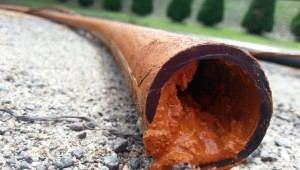
Since the latter reaction is the normal equilibrium in our oxygen atmosphere while the first requires biological coupling with a simultaneous oxidation of carbon, organic material dissolved in water is often the underlying cause of iron-metabolizing bacteria populations. Groundwater may be naturally de-oxygenated by decaying vegetation in swamps; and useful mineral deposits of bog iron ore have formed where that groundwater has historically emerged to be exposed to atmospheric oxygen. Anthropogenic sources like landfill leachate, septic drain fields, or leakage of light petroleum fuels like gasoline are other possible sources of organic materials allowing soil microbes to de-oxygenate groundwater.

A similar reversible reaction may form black deposits of manganese dioxide from dissolved manganese, but is less common because of the relative abundance of iron (5.4 percent) in comparison to manganese (0.1 percent) in average soils. Other conditions associated with iron-oxidizing bacteria result from the anaerobic aqueous environment rather than the bacteria visibly colonizing that habitat. Corrosion of pipes is another source of soluble iron for the first reaction above and the sulfurous smell of rot or decay results from enzymatic conversion of soil sulfates to volatile hydrogen sulfide as an alternative source of oxygen in anaerobic environments.
Influence on water infrastructure
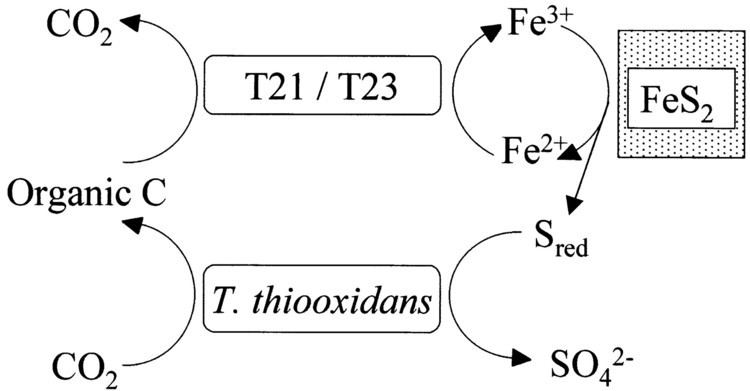
Iron-oxidizing bacteria can pose an issue for the management of water-supply wells, as they can produce insoluble ferric oxide, which appears as brown gelatinous slime that will stain plumbing fixtures, and clothing or utensils washed with the water carrying it.
Possible indicators
The dramatic effects of iron bacteria are seen in surface waters as brown slimy masses on stream bottoms and lakeshores or as an oily sheen upon the water. More serious problems occur when bacteria build up in well systems. Iron bacteria in wells do not cause health problems, but they can reduce well yields by clogging screens and pipes.
Control
Treatment techniques which may be successful in removing or reducing iron bacteria include physical removal, pasteurization, and chemical treatment. Treatment of heavily infected wells may be difficult, expensive, and only partially successful.
Physical removal is typically done as a first step. Small diameter pipes are sometimes cleaned with a wire brush, while larger lines can be scrubbed and flushed clean with a sewer jetter. The pumping equipment in the well must also be removed and cleaned.
Iron filters have been used to treat iron bacteria. Iron filters are similar in appearance and size to conventional water softeners but contain beds of media which have mild oxidizing power. As the iron-bearing water is passed through the bed, any soluble ferrous iron is converted to the insoluble ferric state and then filtered from the water. Any previously precipitated iron is removed by simple mechanical filtration. Several different filter media may be used in these iron filters, including manganese greensand, Birm, MTM, multi-media, sand, and other synthetic materials. In most cases, the higher oxides of manganese produce the desired oxidizing action. Iron filters do have limitations. Since the oxidizing action is relatively mild, it will not work well when organic matter, either combined with the iron or completely separate, is present in the water and iron bacteria will not be killed. Extremely high iron concentrations may require inconvenient frequent backwashing and/or regeneration. Finally, iron filter media requires high flow rates for proper backwashing and such water flows are not always available.
